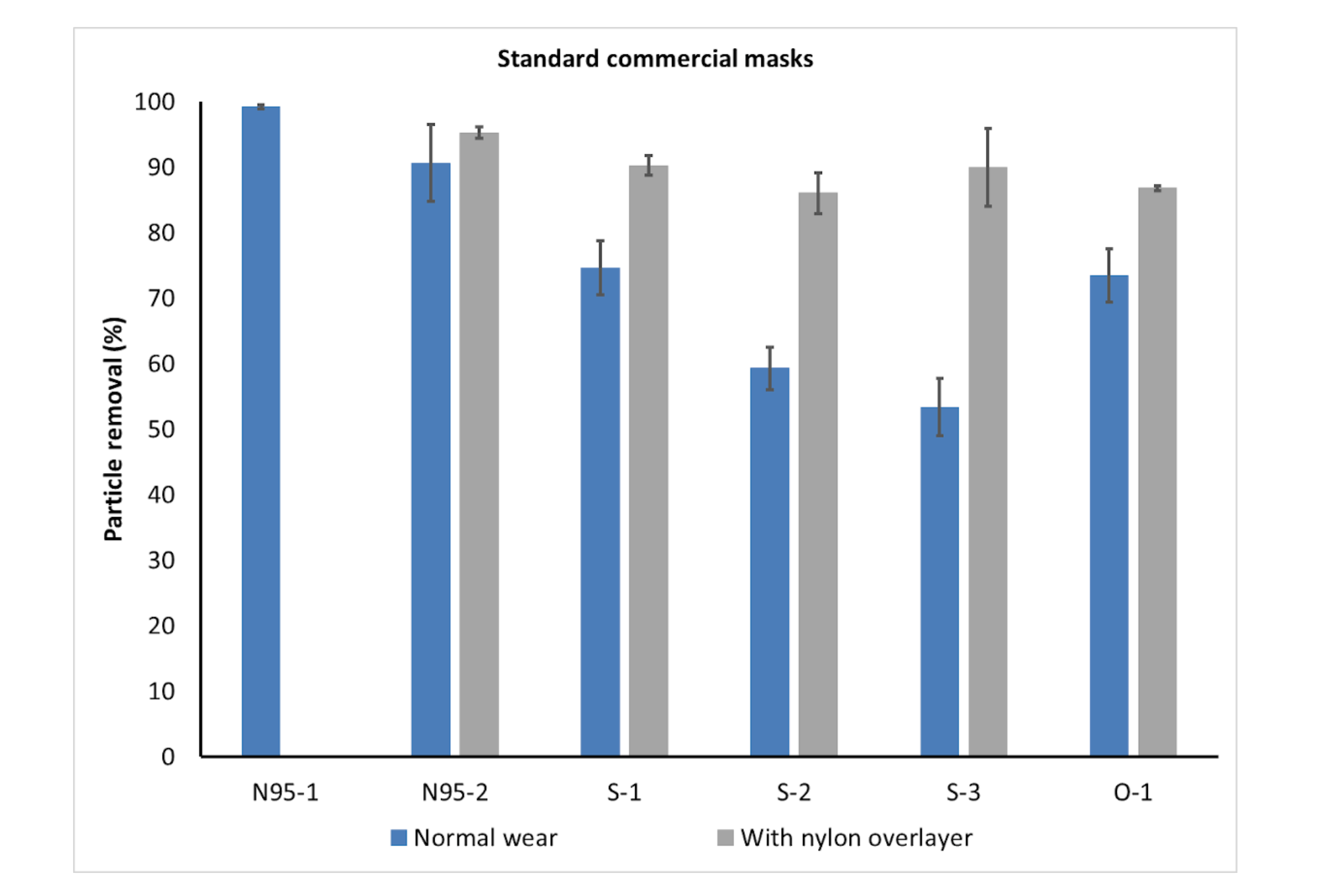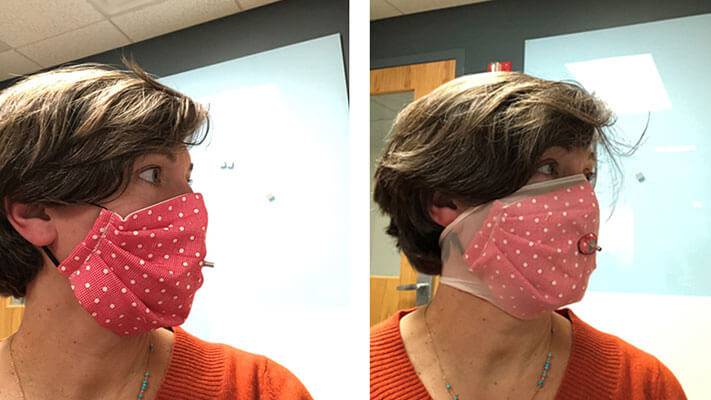Image showing researcher Loretta Fernandez of Northeastern University wearing a homemade face mask without (left) and with (right) an extra outer layer made from nylon stockings. Image © Northeastern University/Loretta Fernandez.
The pandemic - COVID-19, is hitting globally and the global case count reached to 5,920,258 (May 29, 2020, 8:29 AM, GMT), affecting 213 countries and territories. Due to this global hit, the demand for medical supplies increased sharply and there is an obvious shortage of medical supplies like a testing kit, mask, ventilators, and Personal Protective Equipment (PPE).
Currently, many populations of worlds are using homemade cloth masks in the hope that this somehow limits the spread of coronavirus. But how much these loose-fitting cloth masks are useful in not well-observed and not well known.
But now researchers from Northeastern University have found that adding an outer layer made from nylon stockings to a homemade face covering can boost its ability to filter out small particles.
Ben Cowling, a professor of infectious disease epidemiology at the University of Hong Kong who has studied the efficacy of face masks said, "I think it's really a very important study. We need better information on what kind of homemade masks, what kind of fabric masks, are the best, and how we can improve or upgrade basic masks to make them better."
Here the team evaluated the mask performance by determining the mean particle removal efficiency and statistical variability when worn as designed without and with a nylon overlayer.
During the experiment, they even observed that in some that extra added nylon layer helped homemade cloth masks match or exceed the filtering capability of medical-grade surgical masks.
It has been already established fact that the effectiveness of the mask will severely depend on the materials and its fitting property. Standard test measures for the performance of respirators and masks assume that appropriate high-filtration materials have been used in the construction of the masks and it compares the concentration of particles in the air inside and outside of the mask while the subject moves his/her head through a series of positions.
One such method is the test design for testing the performance uses the Fit Factor which is equal to the ratio of time-averaged particle concentration outside and inside masks.
But in the case of a test of the surgical masks, the method mainly focuses on testing the materials and does not provide for a measurement of the mask as constructed or as worn.
Here the team prepared 10 cloth masks with the locally available sourced fabrics of different designs, with and without filters, 3 commercially produced surgical masks. The 3 commercial surgical masks were used for the comparison. To validate the test readings, they used FFP2 and FFP3 - called N95 mask - and a surgical mask from the 3M company model 1826.
Researchers from Northeastern University superimposed a layer, of about 8 to 10 inches top to bottom, of nylon stocking that makes the fabric and other masks similar to N95 respirators, in terms of adherence.
This method enables them to minimized the loss of adhesion around the edges of the face and improved the filtering efficiency of the particles for all types of masks, including commercial surgical ones.
To measure the effectiveness of the protection from airborne virus particles, they used the protocols designed to test the fit and performance of N95 respirators.
For not encountering the different breath rates, they conducted the test while the masks were worn by the same person with the nose and the mouth closed, keeping the head still.
They observed that the filtering efficiency of the N95 mask was greater than 99%, which is the standard value for N95. When the surgical masks (3M brand) were worn with an adjustment wire on the nose they observed an average efficiency of 75%. Almost all other masks reached a filtering power lower than 60%. Compared to 3M surgical masks, which is a reference and basic level, loth masks have always had lower filtering efficiency rates that are between 38% and 96%.

The difference between blue and gray bars provide a measure of the looseness of the fit (extent of leakage of air around the mask in normal wear). The gray bars provide a measure of filtration capacity of the mask material.
They claimed that the filtration ability of homemade masks was lower than 30% (in normal) but when they are added with the pantyhose layer, their filtration ability boosts anywhere from 15% to 50%.
They observed that the used 5 fabric masks showed up the result beyond the reference standard of the 3M surgical mask. These five masks have an additional layer inside (or of simple cotton wadding, or loose-woven cotton muslin or non-woven fabric).
Though it remains to be known about its wear and breath comfortability, the demonstrated additional protection seems to be an easy idea to implement and effective.
Loretta Fernandez, an assistant professor of civil and environmental engineering at Northeastern University and one of the scientists who conducted the research said, "Adding a layer that keeps the mask tight to the face is going to improve the function of any of these masks because how well they protect us is not only a matter of what material we're using to do the filtering but also how well [the mask] seals to the face so that we're trying to avoid air making it around the mask into our breathing zone."
The research work was posted on the scientific preprint (not peer-reviewed) site medRxiv, on May 18, 2020.
